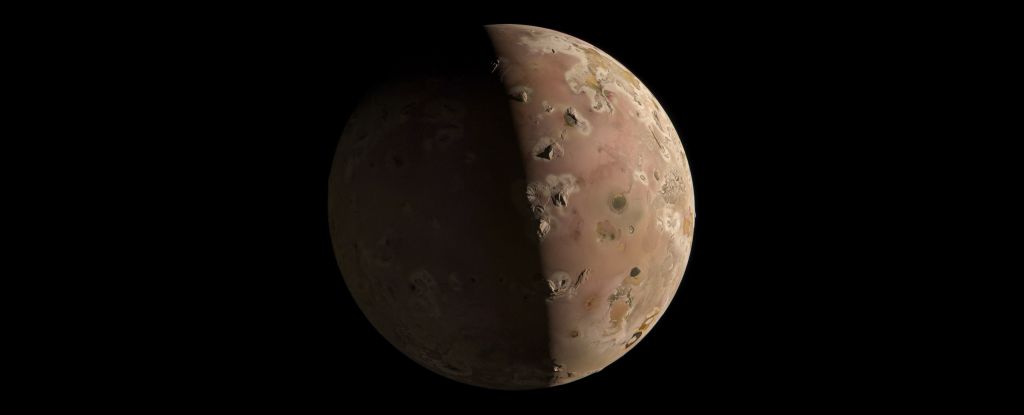Worlds don’t get much wilder than Jupiter‘s moon Io.
It packs more volcanism than any other body in the Solar System, in a sphere just a little larger than Earth’s cold, dusty Moon. Its surface is riddled with volcanoes, some 400 of which are active at any given time.
Io is an absolutely jaw-dropping place – and we just got a front-row seat to some of its strange, untameable landscapes.
As NASA’s Juno swooped in for two close flybys of the moon in December 2023 and February 2024, it took observations of regions we hadn’t seen before, the northern latitudes, capturing some of Io’s fire and fury live.
frameborder=”0″ allow=”accelerometer; autoplay; clipboard-write; encrypted-media; gyroscope; picture-in-picture; web-share” referrerpolicy=”strict-origin-when-cross-origin” allowfullscreen>
“Io is simply littered with volcanoes, and we caught a few of them in action,” says Scott Bolton, a space physicist with the Southwest Research Institute (SwRI) and principal investigator of the Juno probe.
“We also got some great close-ups and other data on a 200-kilometer-long (127-mile-long) lava lake called Loki Patera. There is amazing detail showing these crazy islands embedded in the middle of a potentially magma lake rimmed with hot lava.
“The specular reflection our instruments recorded of the lake suggests parts of Io’s surface are as smooth as glass, reminiscent of volcanically created obsidian glass on Earth.”
Io may be small, relatively speaking, but its effects are mighty, a result of its complex relationship with Jupiter.
As the moon traces an elliptical orbit around Jupiter, the changing gravitational stress causes Io to heat up internally. Two other Galilean moons – Europa and Ganymede – also exert a gravitational pull that further stresses Io’s insides.
All this heat erupts from Io in the form of rampant volcanism. It constantly spews volcanic gasses that are ripped from Io’s feeble gravitational hold and pulled into a huge torus of plasma that circles Jupiter.
This plasma is pulled and accelerated along threads of Jupiter’s magnetic field to its poles, where it fuels permanent, powerful ultraviolet aurorae – the most powerful in the Solar System.
And it’s not a short-term thing, either. A new analysis of the two sulfur isotopes in Io’s tenuous atmosphere shows a disproportionate amount of the heavier isotope. The lighter one rises to the top of the atmosphere, where it is more likely to be stripped away to join the plasma torus circling Jupiter.
frameborder=”0″ allow=”accelerometer; autoplay; clipboard-write; encrypted-media; gyroscope; picture-in-picture; web-share” referrerpolicy=”strict-origin-when-cross-origin” allowfullscreen>
The ratio of the two isotopes suggests that Io has been undergoing this stripping process for its entire 4.5 billion-year lifespan. Jupiter is thought to be the first planet to have formed in the Solar System, so its invisible auroral glow may have been illuminating space for all that time.
Juno’s mission is ongoing, and will include more Io flybys, flybys of Jupiter (of course), and the other Galilean moons.
Io, however, occupies a very special place in our hearts and imaginations, a world that represents some of the fascinating extremes of the Universe, right here in the Solar System.
Imagine what it would be like if we had the ability to go there.
The Juno team presented their latest findings at the European Geosciences Union General Assembly in Vienna.





